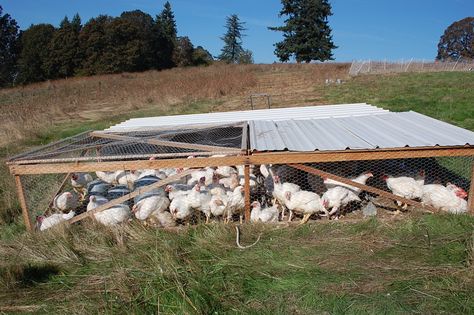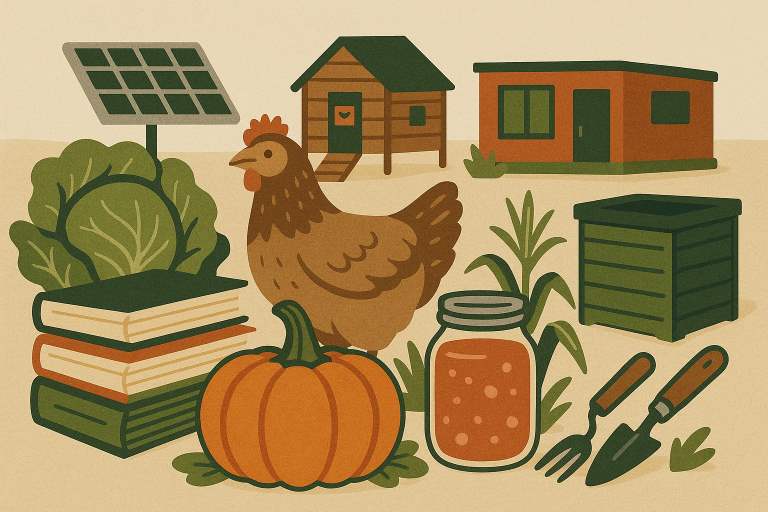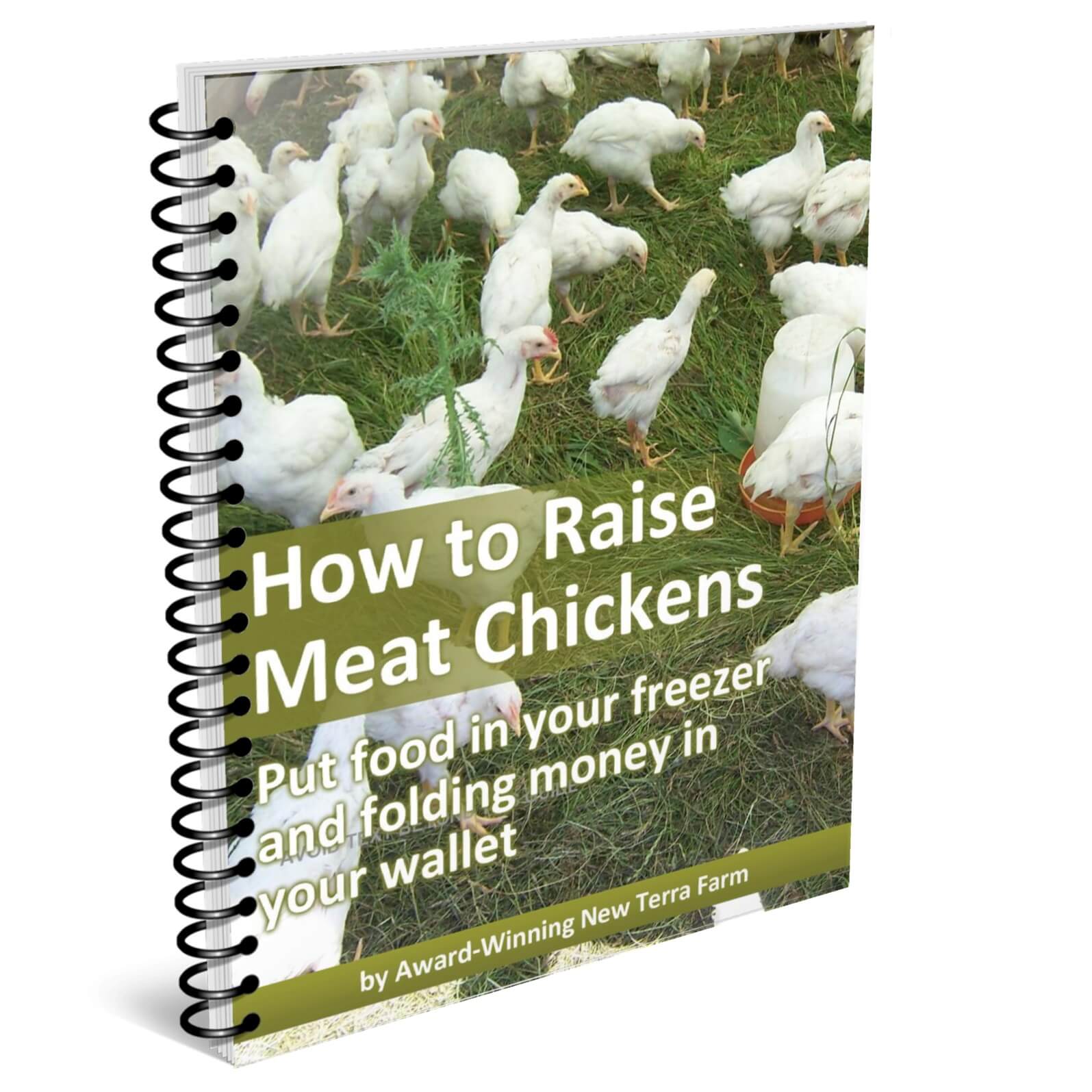Building a chicken tractor for raising meat birds Our first chicken tractor Our first chicken tractorWe have been raising meat birds on pasture for about 20 years. This page explains our experience with chicken tractors and why we eventually moved away from that model of production. A 'chicken tractor' is basically a low, wire-enclosed, open-bottomed box for raising chickens. This structure keeps the birds in and predators out. The tractors are usually moved to fresh ground daily. Carefully Curated Resources For The Homesteader and Prudent Property Owner The world seems to be a little unsettled these days. I'm always looking for ways to make New Terra Farm more self-sufficient and productive. Here's a few of the best ways I've found to make self-sufficiency happen. Useful Homesteader Resources These portable cages can be constructed to just about any size suitable to your purposes. Make sure to allow adequate space for the birds so they don't poop up the enclosure too quick. Well-known farmer Joel Salatin of Polyface Farm uses a 'fleet' of tractors sized about 10' x 12' to raise thousands of birds a year. I believe he puts about 75 birds in each tractor, giving a space of about 1 1/2 square feet per bird.
 Chicken tractor at Polyface Farm Chicken tractor at Polyface FarmThe New Terra Farm Chicken TractorWe built a few 4' x 8' chicken tractors and put them in our garden one
year. We moved the tractors around and the birds ate weeds and bugs, and
fertilized our garden.
 Not pretty but it worked OK Not pretty but it worked OKThe tractor pictured above is 4' x 8'; we would put up to a dozen birds in it and move it around our garden to help clean up weeds and bugs. The Benefits of Chicken Tractors
The Drawbacks of Chicken Tractors
It was this last point that finally moved us away from chicken tractors to the day-range system we use now. The Mini-Farm Report shows how to integrate chickens, pigs and a market garden, even on a small property. Get it below. Chicken Tractors vs. Day-Range Poultry
We no longer use chicken tractors for our meat birds. We were not happy with the performance of chickens in them, and instead we designed and built a Movable Coop and our Hoop Coop to day-range our poultry (see pictures below.)  We find our chickens and turkeys do better if we 'day range' them We find our chickens and turkeys do better if we 'day range' them The first portable coop we built The first portable coop we builtThe portable coops are protected by electric mesh fencing powered by a solar fence charger. We let the birds out in the daytime and bring them in at night. Easy to do because they will follow the feed. The birds are out in the daytime, so accumulation of poop in the coop is reduced. We move the coops every couple days and relocate the fencing once or twice for each batch of birds. Because we move the coops when the birds are out, no birds get injured. We're happier with the results in our movable coops. The birds seem healthier and happier too, and our losses have dropped to just about zero. If you think you might want to try day-ranging your own birds, check out the resource below. Bootstrap Birdies! Based on our 20+ years of experience raising meat birds on pasture, here is is the latest edition of How to Raise Meat Chickens. Along with detailed instructions on raising healthy, happy birds, you also get plans for for our two styles of movable coops (plus a few more goodies). OR, get 'How To Raise Meat Chickens' in my Homesteader Book Bundle and save a bundle. For the backyard growerI didn't write this one, but it's an excellent resource for the homesteader or small property owner anyway! The Self-Sufficient Backyard has literally hundreds of plans and practical tools and techniques for the serious homesteader.Written by a couple who have actually done the work. From growing food, to medicinal herbs, solar electricity, root cellaring, growing small livestock, and selling select produce as a side hustle, plus many more money-saving and money-making ideas, this book is an encyclopedia of growing and building knowledge. A must-have in your homestead library. I only write about topics I have personal experience with. The authors of The Self-Sufficient Backyard have done the same. Highly recommended!
|
See something you like? Share!
Recent Articles
-
Farm grown reviews of products recommended by New Terra Farm
Dec 04, 25 06:26 AM
Find great farm and garden products in my farm grown reviews -
Best Chicken Coop and Accessories for Small Farms and Homesteads
Nov 30, 25 09:18 AM
Looking for the best chicken coop? Here are the top coops, accessories, nest boxes, and gear to build a safe, productive poultry setup. -
Community Supported Agriculture Marketing Ideas To Sell Out The Season
Nov 05, 25 05:18 AM
Authentic Community Supported Agriculture marketing ideas to grow loyalty, boost sign-ups, and sell out your CSA every year






